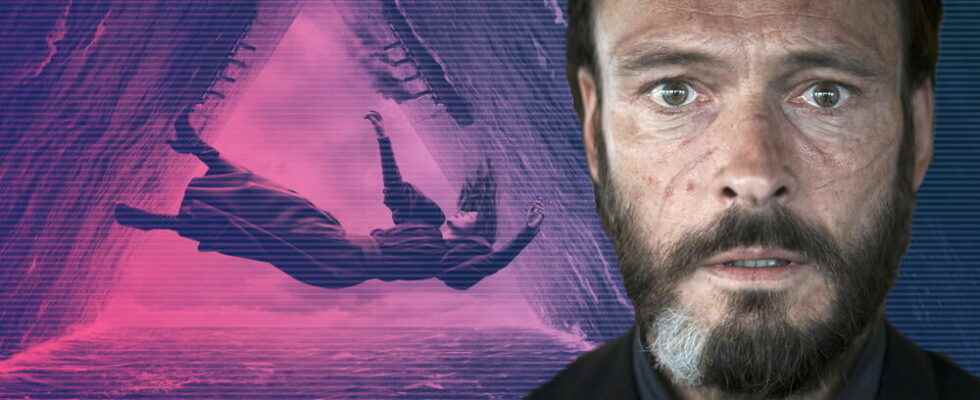Warning, spoilers for 1899 follow: Netflix’ 1899 exposes the ship voyage at the end of season 1 as a simulation and gives us new mysteries. Knobler can fall back on an aid: Because the mystery series has one scientific-philosophical basis, with which the series can already be better explained. After Dark brought us closer to quantum physics, 1899 also dedicated himself to concrete research concepts. In order to understand this, we have to (digitally) go to school and can thus guess where the potential seasons 2 and 3 are headed.
The science behind 1899: The key to the series is simulation theory
In the podcast interview with Moviepilot, the 1899 masterminds Baran bo Odar and Jantje Friese talked about a scientific-philosophical theory on which their series is based. This mental model became the inspiration on which they build the story. Screenwriter Jantje Friese revealed that Core theme of 1899 the simulation theory is. (Listen: Minute 14-18.)
At this point you will find external content that complements the article. You can show it and hide it again with one click.
Of course it’s about simulation theory. And we play with that […]. The thing is that while researching Dark we stumbled across a few things that also have to do with quantum mechanics and that’s how 1899 took shape: The question of what reality is and how to actually recognize what reality isis the central theme.
This basic idea can also be thought of for 1899 beyond season 1 with its big twist, if we consider that the spaceship in the year 2099 may be in the last minutes of the 8th episode not yet the end of false reality and we must continue to question everything. Because the simulation theory has even more facets.
What is the simulation hypothesis behind 1899?
Now you can see Wikipedia entries on the simulation theory or actually the Simulation hypothesis by Nick Bostrom to roll Or you can do it like Baran bo Odar and educate yourself with YouTube explanations. Broken down, the conceptual model consists of the “Choice” between human extinction or the truth that we are a simulation. Both are reflected in the spaceship end of 1899. You can see the detailed explanation here:
At this point you will find external content from YouTube, which complements the article. You can show it and hide it again with one click.
Films that are based precisely on this thought concept of the simulation argument are the famous sci-fi cult film Matrix (1999), but also World on the Wire (1973), The 13th Floor (1999) and Source Code (2011). In sci-fi literature, Daniel F. Galouye was one of the first to explore the possibility of a simulated world in 1964’s Simulacron-3* in novel form.
Nick Bostrom mentions in his simulation theory 3 possibilities, all equally likely (although 1899 also loves the number 3):
Parallel to this unsolvable thought experiment, the final resolution of 1899 (in season 3) remains open. But the simulation theory already exists triple impetus to think about the end of the series. The Netflix series also combines it with a second philosophical approach: Plato’s allegory of the cave.
1899 insights into Plato’s allegory of the cave
Plato’s allegory of the cave is even mentioned by name in 1899. The more than 2,300-year-old story of a person who has perceived the shadows on a cave wall as the only reality all his life because he knew nothing else is one epistemology. Only those who break out of the false world (cave) can go into the light and be changing the picture of reality, in order to subsequently redeem others from their wrong perception. Here you will find the allegory of the cave explained again in short form:
At this point you will find external content from YouTube, which complements the article. You can show it and hide it again with one click.
In Netflix’, it seems that Maura (Emily Beecham) is the first to leave the cave (aka the simulated ship). But will she also be able to free the others and lead them into the light of knowledge? And you all want to follow there?
*The links to the Amazon offer are so-called affiliate links. If you make a purchase through these links, we will receive a commission.
What do you think of the scientific-philosophical theories behind 1899?
